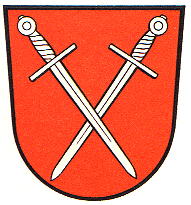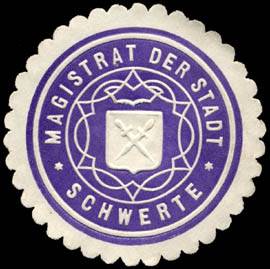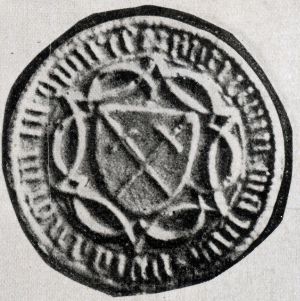Schwerte: Difference between revisions
Knorrepoes (talk | contribs) No edit summary |
Knorrepoes (talk | contribs) m (Text replace - "|width="15%"|50 px|right |}" to "|width="15%"|50 px|right |}<seo title="Wappen, Gemeindewappen" />") |
||
| Line 3: | Line 3: | ||
|width="70%" align="center" |'''Heraldry of the World<br/>Civic heraldry of [[Germany]] - [[Deutsche Wappen|Deutsche Wappen (Gemeindewappen/Kreiswappen)]]''' | |width="70%" align="center" |'''Heraldry of the World<br/>Civic heraldry of [[Germany]] - [[Deutsche Wappen|Deutsche Wappen (Gemeindewappen/Kreiswappen)]]''' | ||
|width="15%"|[[File:Germany.jpg|50 px|right]] | |width="15%"|[[File:Germany.jpg|50 px|right]] | ||
|} | |}<seo title="Wappen, Gemeindewappen" /> | ||
Revision as of 18:36, 5 November 2012
| Heraldry of the World Civic heraldry of Germany - Deutsche Wappen (Gemeindewappen/Kreiswappen) |
SCHWERTE
State : Nordrhein-Westfalen
District (Kreis) : Unna (until 1975 Iserlohn)
Additions : 1975 Amt Ergste (partly), Amt Westhofen, Ergste Geisecke, Villigst, Wandhofen, Westhofen
Official blazon
Origin/meaning
Schwerte received city rights in 1242 from Count Adolf I of the Mark. The oldest known seal dates from 1427, but it probably dates from 1397 when the city rights were confirmed. It already shows the two crossed swords, a canting symbol (Schwerter=swords). Ever since two swords have been on the seals and the arms of the city.
The colours, however, have changed regularly; until 1909 it was most often shown as black swords on blue. From 1911-19437 as black on silver (see below) and since 1947 as above. These colours were derived from a fresco found in the St. Victorchurch, which dates from the 15th century.
| Seal from 1437 |
Seal from around 1900 |
| The arms in the Kaffee Hag albums +/- 1925 |
Literature : Stadler, 1964-1971, 8 volumes; Hupp, O: Kaffee Hag albums, 1920s




